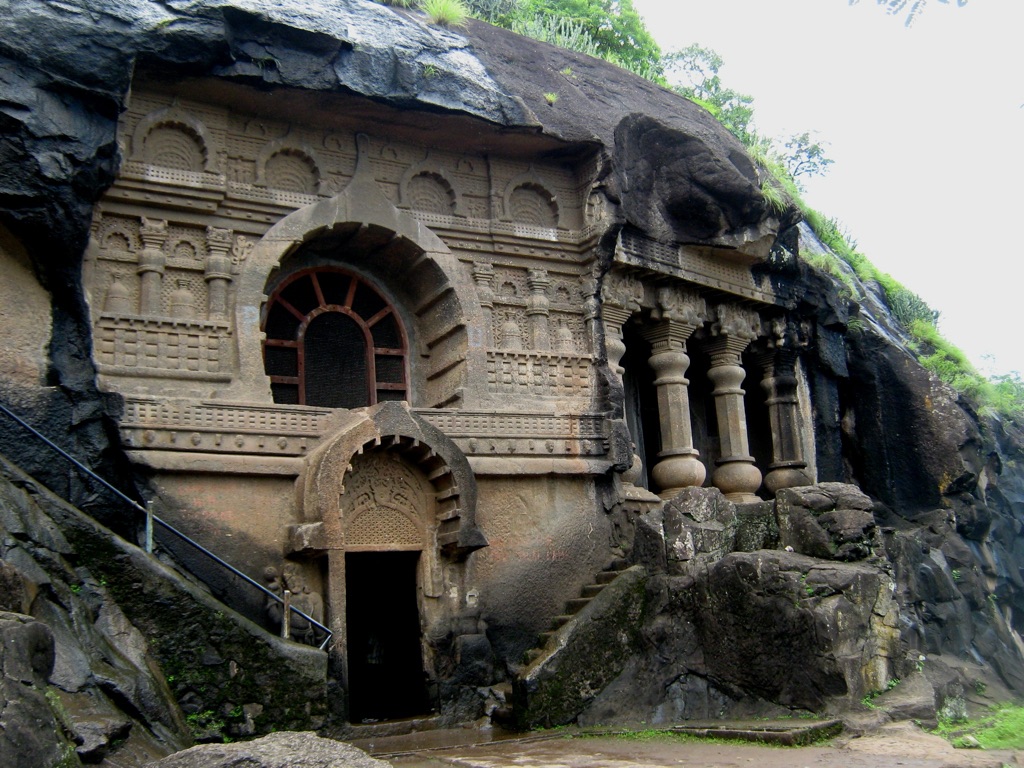Summary
An Ancient Ensemble of Caves
Nestled in the tranquil surroundings of the Nashik region, the Pandavleni Caves (also known as the Nasik Caves) are a testament to ancient Indian rock-cut architecture. These caves, hewn into the rocky hills, date back between the 3rd century BCE and the 2nd century CE. This cluster of 24 caves served as a sanctuary for Buddhist monks over centuries. They feature exquisite carvings, water cisterns, and intricate motifs reflective of the Hinayana Buddhism sect. Each cave in Pandavleni, with its unique charm and historical essence, offers insights into the lives of these early inhabitants. The caves hold an allure for both history aficionados and curious travelers alike.
Get your dose of History via Email
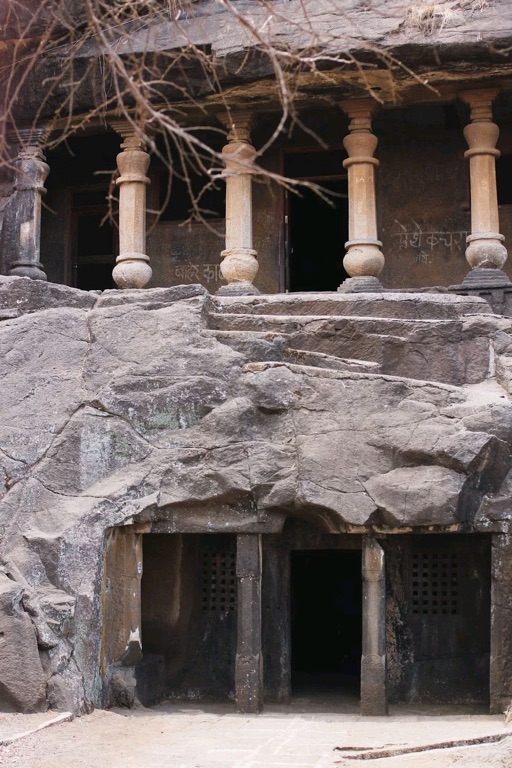
Architectural Marvels and Artistic Splendor
The artistry within Pandavleni Caves reveals the remarkable craftsmanship of ancient artisans. Visitors are captivated by the magnificent chaityas, or prayer halls, adorned with stupas and stone pillars. The viharas, or monasteries, exhibit a simple elegance with their rock-cut beds and multi-storied structures. The interplay of light and shadow across the carvings creates a serene ambience, perfect for contemplation. The cave complex not only holds religious importance but also stands as a symbol of the era’s advanced stonework and design principles.
A Journey into a Bygone Era
Exploring the Pandavleni Caves is like stepping back in time, tracing the footsteps of bygone eras. The presence of inscriptions and epigraphs in Brahmi script enchants heritage enthusiasts, revealing tales of royal patronage and religious fervor. The ascent to the caves is interspersed with panoramic views of the surrounding area, which enrich the overall experience. For passionate trekkers and history buffs, a visit to the Pandavleni Caves transcends a mere excursion; it becomes a profound pilgrimage to India’s timeless history and sublime spirituality.
Historical Background of Pandavleni Caves
The Origins and Significance
Nestled in the misty heights of the Nashik region, the Pandavleni Caves stand as a symbol of ancient splendor. These caves, also known as the Trirashmi Caves, suggest their origins lie as far back as the 3rd century BCE. Created over many eras, they showcase the evolution of Buddhist thought and communal life. Specifically, their name, Pandavleni, is a misnomer linked to the Pandavas of the Mahabharata. Despite this, the caves remain critical to understanding early Buddhist architecture and monastic systems.
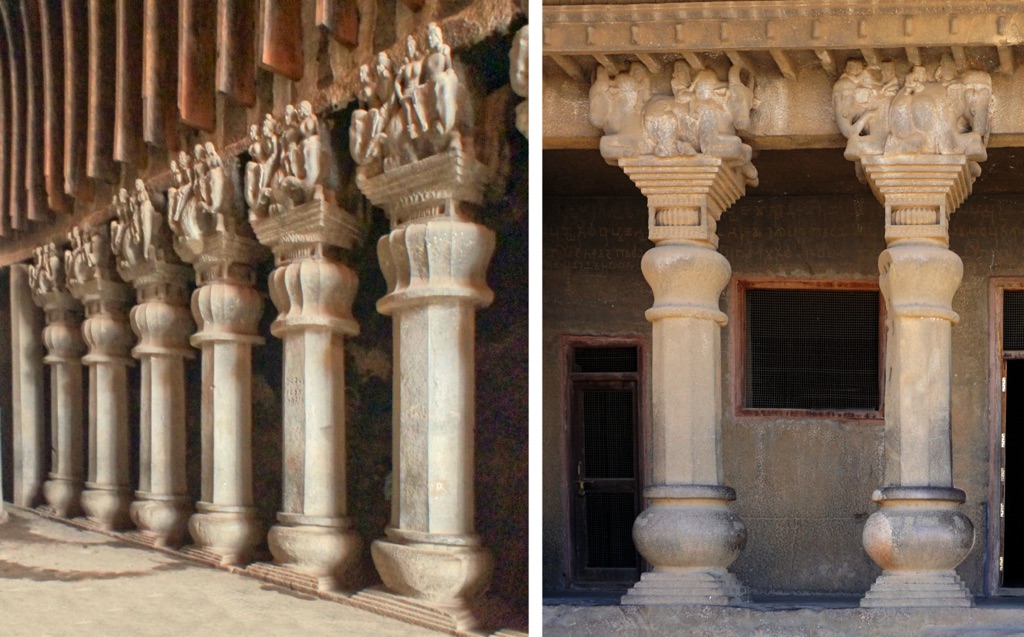
An Abode for Monks and Artisans
These caves served as a peaceful retreat for Buddhist monks. It is where they pondered on the teachings of Buddha and engaged in daily rituals. The artisans who sculpted these caves worked to support the monks’ spiritual needs, leaving behind an enduring legacy. Their craftsmanship is evident in the stupas, chaityas, and intricate carvings. These adorn the cave walls and serve as a reminder of their devotion and skill.
Architectural Mastery of the Trirashmi Caves
The Pandavleni Caves exhibit an architectural mastery throughout their stone structures. The caves feature a variety of designs, from simple, undecorated spaces to elaborate carvings. These decorations depict images of Buddha and tales from the Jatakas. Carvers paid attention to the finest details in these serene hillside hollows. Moreover, inscriptions in the caves mention gifts from ancient kings and commoners alike. These inscriptions underline how society came together to support these sanctuaries.
Pandavleni’s Place in Cultural Continuity
The Pandavleni Caves offer more than a glimpse into the past. Indeed, they are active participants in cultural continuity. Over time, the caves have seen different sects and ideas flow through them. Yet, they have maintained their sanctity and purpose. Today, they draw visitors not just as historical sites but also as places of learning and reflection. The caves continue to inspire a sense of awe and reverence for those who walk their ancient corridors.
Preserving the Past for Future Generations
Ensuring the preservation of the Pandavleni Caves is crucial for future generations. They are a source of pride for the local community and stand as a monument to India’s remarkable historical legacy. Challenges such as natural weathering and human impact necessitate our collective responsibility. It is important to protect and maintain these caves. After all, they serve as vital links between the past and the present, teaching us about the simplicity and depth of early monastic life.
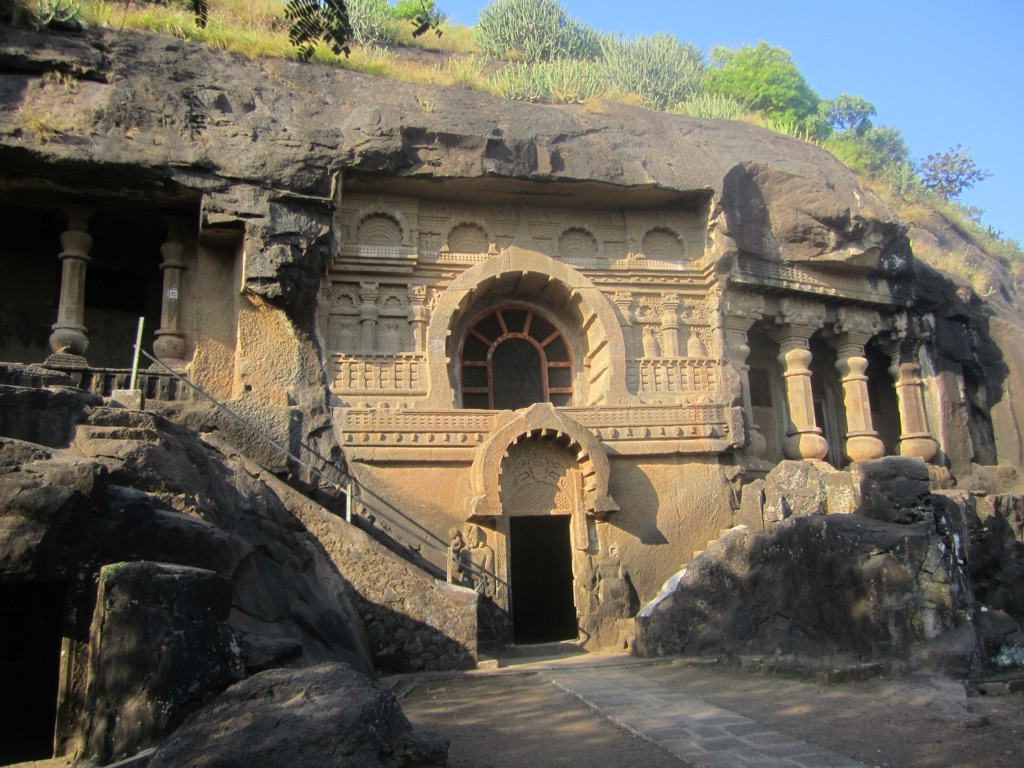
The Discovery of Pandavleni Caves
Unveiling Ancient Monuments
The Pandavleni Caves, nestled in the Nashik region of Maharashtra, were unveiled to the modern world during the 19th century. Adventurous explorers stumbled upon these ancient Buddhist relics, hidden away for centuries. These caves were not hidden by dense jungles but in plain sight on a mountain face. Their presence was well known to the local inhabitants who had woven them into folk tales. It was the British officers with an eye for archaeology who brought them into historical limelight.
Insights from Inscriptions
Subsequent to their rediscovery, scholars began to decipher the inscriptions within the caves. These inscriptions held clues to the caves’ creators and their patrons. They spoke of donations by kings, merchants, and local guilds, highlighting the caves’ communal importance. The use of the Brahmi and Devanagari scripts in these messages established a timeline for their occupation and use.
Systematic Archaeological Efforts
Once brought to the attention of historical scholars, the caves underwent systematic archaeological studies. Research revealed that the caves had been occupied by successive waves of monks from various Buddhist traditions. These findings helped piece together the social and religious landscape of ancient India. Each cave served a specific purpose, from dwellings to halls for teaching and meditation.
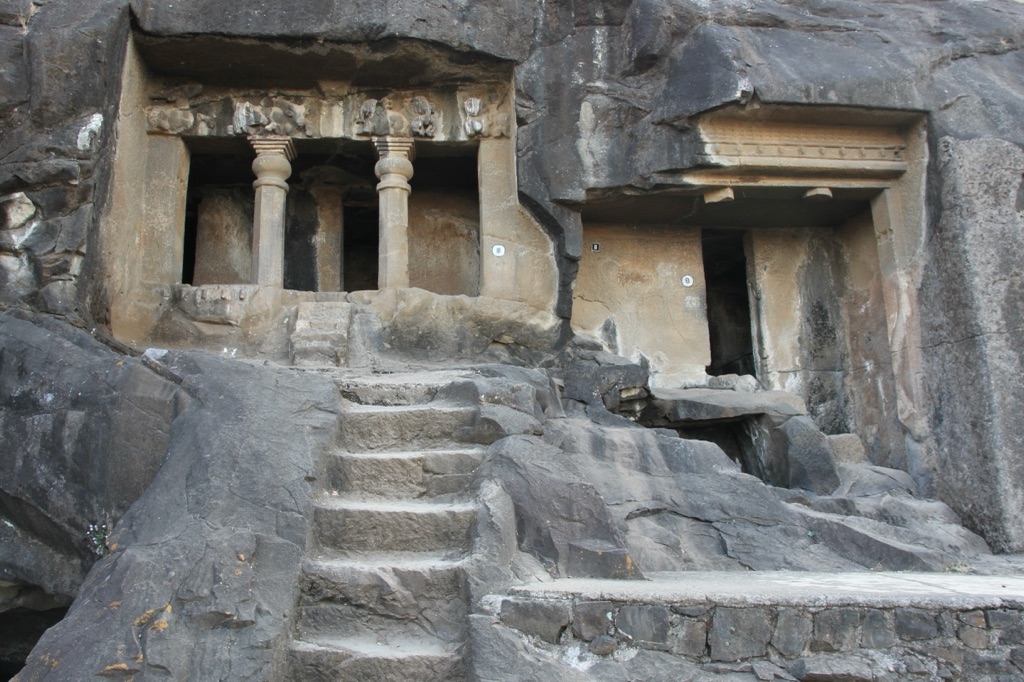
Linking to the Greater Buddhist Circuit
Recognition of the Pandavleni Caves as significant historical treasures linked them to the broader Buddhist circuit across Asia. They became an integral part of the network that includes renowned sites like Sanchi, Ajanta, and Ellora. This association boosted their preservation and study, emphasizing their significance beyond regional borders.
Preservation and Public Accessibility
Today, the Pandavleni Caves are easier to access than before, thanks to efforts to make them available to the public. Maintaining a balance between preservation and tourism, authorities have worked to protect the integrity of the site. Thus, the Pandavleni Caves continue to be a testament to the ingenuity of ancient inhabitants and the dedication of modern conservationists.
Cultural Significance, Dating methods, Theories and Interpretations
The Cultural Heart of Ancient Nashik
The Pandavleni Caves stand as an emblem of cultural and religious activities that flourished in ancient Nashik. They represented the rich tapestry of communal life, hosting monks and followers of Buddhism. The caves were centers of education, where scriptures were expounded and knowledge exchanged. Rituals and ceremonies performed within their precincts echoed the deep-rooted spiritual practices of the time. The Pandavleni Caves, therefore, remain a crucial landmark demonstrating the societal values and religious devotion of the period.
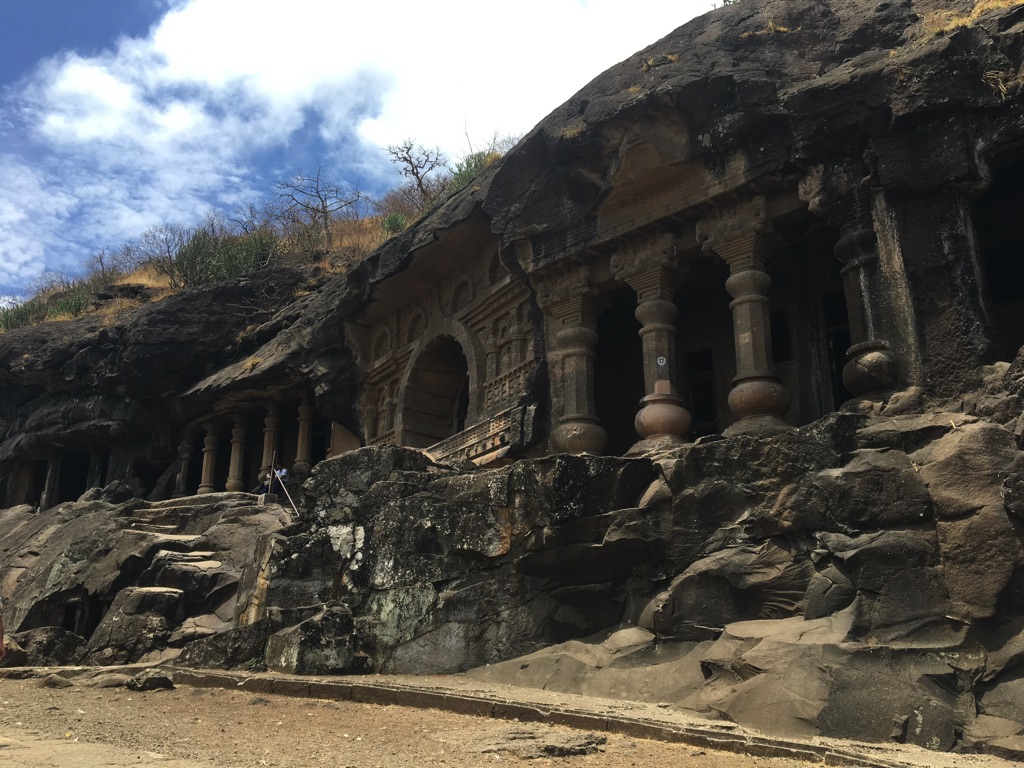
Unlocking the Age of the Caves
Dating the Pandavleni Caves has been vital to understanding their historical context. Archaeologists and historians have employed techniques like typology and analysis of inscriptions to estimate their age. The stylistic attributes of the carvings and architecture suggest they were built between the 3rd century BCE and the 2nd century CE. Inscriptions in the caves also provide evidential support for dating, linking them to known historical figures and periods.
Theories Behind Their Purpose
Theories about the Pandavleni Caves’ initial purpose abound. Some scholars propose they were retreats that offered seclusion for meditation and religious discourse. Others posit they were educational hubs that drew scholars from across the region. Though the caves’ utilitarian aspects are clear, the specifics of their founding intentions remain partly speculative. They may also have served as rest stops for weary travelers on trade routes, adding a layer of commercial significance to their religious and educational roles.
Interpreting the Cave Iconography
Deciphering the carvings and motifs adorning the Pandavleni Caves sheds light on the beliefs and narratives prevalent at the time. The iconography is predominantly Buddhist, with images of the Buddha, Bodhisattvas, and various symbols representing the path to enlightenment. These visual narratives provide invaluable insight into the conveyance of religious teachings and the artistic expressions of those teachings throughout the ages.
Continued Significance in Modern Times
In contemporary times, the Pandavleni Caves serve not only as a historical site but also as a point of reflection. They offer a space for people to engage with India’s rich heritage and spirituality. The continued reverence and scholarly interest affirm the caves’ long-standing impact on cultural and religious discourse. Interpretations of the caves continue to evolve as new findings and technologies shed light on their shadows. This ensures their lasting relevance and provides layers of meaning for visitors and academics alike.
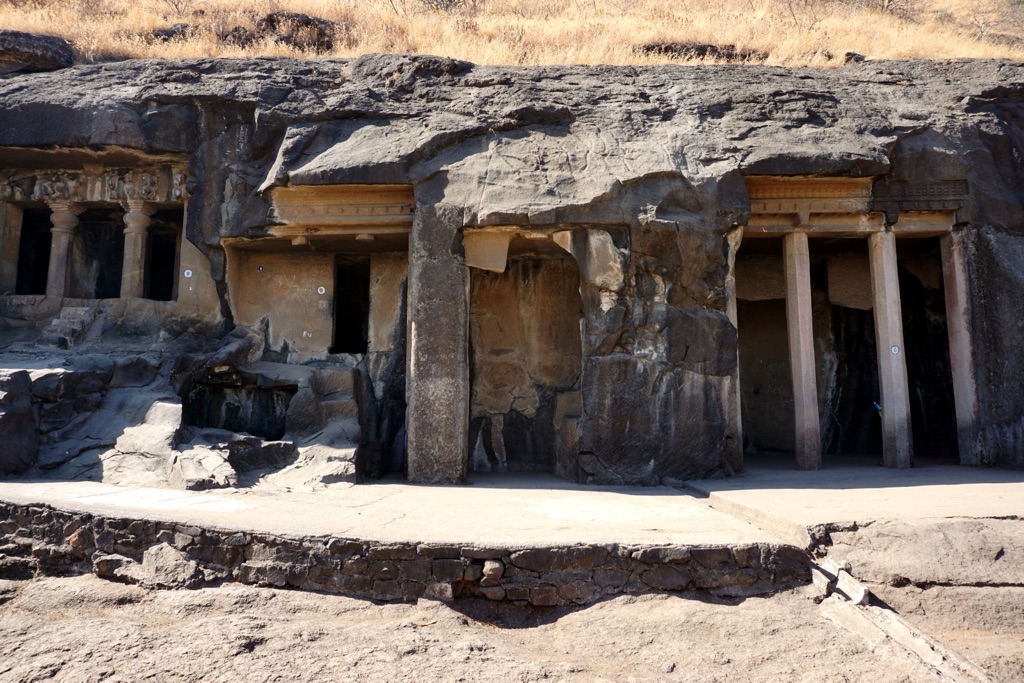
Conclusion and Sources
In conclusion, the Pandavleni Caves are a remarkable historical site that offers a unique window into ancient India’s cultural and religious developments. Through the examination of their architecture, inscriptions, and iconography, we gain invaluable insights into the practices and beliefs of the time. While there remains much to learn about these ancient structures, it is clear that they hold a significant place in India’s rich tapestry of heritage. Preserving these relics for future generations is essential in maintaining the link to our past and understanding the progression of society and spirituality in human history.
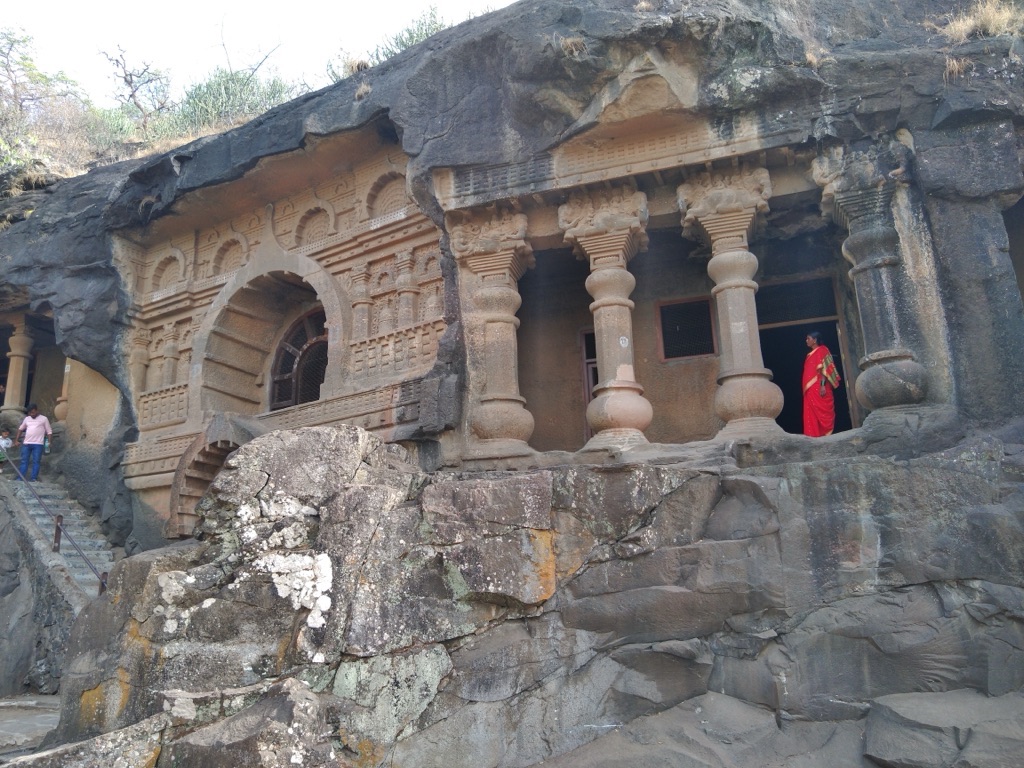
For further reading and to validate the information presented in this article, the following sources are recommended:
Or you can check any of these reputable archaeological and historical texts:
Cohen, R. (2006). The Caves of the Thousand Buddhas. Asian Affairs, 37(3), pp. 341-356.
Behl, B.K. (1998). The Ajanta Caves: Artistic Wonder of Ancient Buddhist India. New York: Harry N. Abrams. ISBN 0810934334.
Schlingloff, D. (2012). Studies in the Ajanta Paintings: Identifications and Interpretations. New Delhi: Aryan Books International. ISBN 8173054381.
Spink, W. (2006). Ajanta: History and Development, Volume 2: Arguments about Ajanta. Leiden: Brill. ISBN 9004148339.

